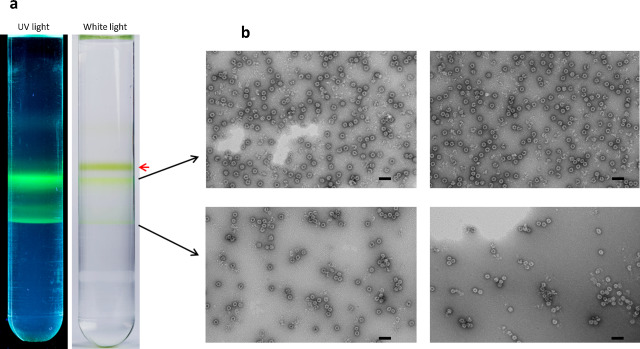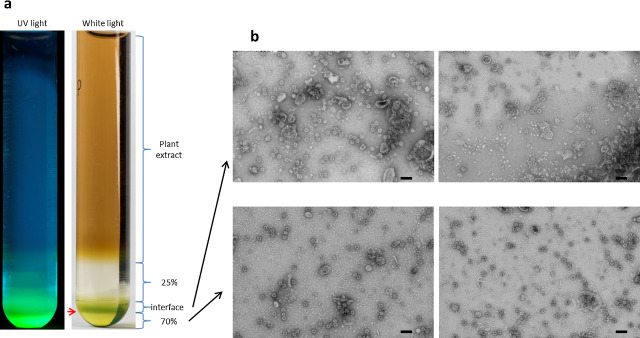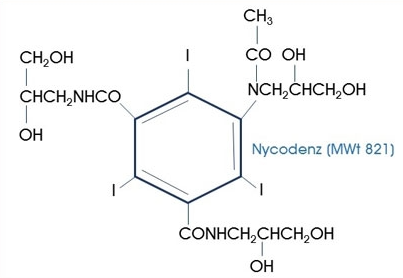Exploring Precision and Versatility: The Fundamental Role of Nycodenz in Advanced Laboratory Applications
Nycodenz is a brand name for a non-ionic, iso-osmotic density gradient medium commonly used in various laboratory applications, particularly in the field of molecular biology and biochemistry. It belongs to the family of iodinated density gradient media. Density gradient media are substances that form stable gradients of density when layered in a centrifuge tube, allowing for the separation of particles based on their buoyant density.
Nycodenz is characterized by its unique properties, including high stability, biocompatibility, and a lack of ionic charge. These features make it suitable for applications such as cell separation, organelle isolation, virus purification, and protein purification. One of its key advantages is its ability to provide high-resolution separation, allowing researchers to isolate particles with similar densities accurately.
Due to its non-toxic nature and compatibility with biological macromolecules, Nycodenz has become a valuable tool in various scientific studies, contributing to advancements in cell biology, virology, and other related fields. It is often employed in techniques like density gradient centrifugation to separate and purify different components within biological samples.
Unveiling Nycodenz: A Comprehensive Guide to Its Applications and Benefits
Introduction:
Nycodenz, a powerful density gradient medium, has emerged as a cornerstone in various scientific disciplines, playing a pivotal role in diverse applications ranging from molecular biology to medical research. This professional content aims to provide a comprehensive overview of Nycodenz, shedding light on its properties, applications, and the significant impact it has had on scientific advancements.
Understanding Nycodenz:
Nycodenz, a non-ionic, iso-osmotic density gradient medium, belongs to the family of iodinated density gradient media. Developed and refined over the years, Nycodenz is renowned for its exceptional versatility and stability, making it an indispensable tool in various laboratory settings.
Purification of Virus-Like Particles (VLPs) Using Nycodenz Gradient Centrifugation: A Visual Analysis
 Introduction
Introduction
The purification of Virus-Like Particles (VLPs) is a critical step in virology research and vaccine development. Nycodenz gradient centrifugation is a highly effective method for this purpose. This content provides insights into the process, with a focus on the analysis of ultracentrifuge tube contents under UV and white light post-centrifugation.
Background on VLPs and Nycodenz Gradient Centrifugation
- VLPs: Mimic the structure of viruses but are non-infectious as they lack viral genetic material.
- Nycodenz Gradients: Offer a non-ionic, low osmolality environment ideal for the delicate nature of VLPs.
- Ultracentrifugation: A method used to separate components based on density, crucial for isolating VLPs from impurities.
Methodology
- Preparation of Nycodenz Gradient: Creating a gradient suitable for the density of VLPs.
- Sample Introduction: Loading the VLP-containing sample into the gradient.
- Ultracentrifugation: Conditions (speed, time) optimized for VLP separation.
- Post-Centrifugation Analysis: Using UV and white light to visualize the separation results.
Visual Analysis Post-Ultracentrifugation
- UV Light Photograph (Left):
- Appearance: VLPs may fluoresce or absorb UV light, making them visible.
- Interpretation: Bands or layers indicating VLP concentration can be identified.
- White Light Photograph (Right):
- Appearance: Under normal light, VLPs may appear as distinct bands.
- Interpretation: Denser materials settle lower in the gradient; VLPs typically occupy a specific band.
Results Interpretation
- Band Identification: The location and appearance of bands under both lighting conditions indicate the success of the separation.
- Purity Assessment: Clear, distinct bands suggest high purity of VLPs.
- Volume Recovery: Deciding on which part of the gradient to collect based on the observed bands.
Advancing Precision: Concentrating and Purifying VLPs with a Double Sucrose Cushion
Introduction:
In the dynamic field of virology and vaccine development, the purification and concentration of Virus-Like Particles (VLPs) are pivotal for understanding their composition and function. This professional content delves into the utilization of a double sucrose cushion for concentrating and partially purifying VLPs through ultracentrifugation. The presented UV light (left) and white light (right) photographs of a 14X89mm ultracentrifuge tube after centrifugation offer a visual journey into the success of this technique.
The Double Sucrose Cushion Technique:
- Principle of Sucrose Density Gradient:
- The use of sucrose creates distinct layers with varying concentrations, enabling the separation of particles based on their buoyant density.
- 25% and 70% Sucrose Layers:
- The establishment of a double sucrose cushion involves layering solutions with sucrose concentrations of 25% and 70%.
- The specific density gradient formed ensures the sedimentation of VLPs at the interface between these layers.
 Visual Documentation:
Visual Documentation:
a) UV Light and White Light Photographs:
- UV Light (Left): Captures the fluorescently labeled VLPs, emphasizing their presence at the interface and in the 70% sucrose layer.
- White Light (Right): Provides a comprehensive view of the entire tube post-centrifugation, revealing the distribution of impurities and VLPs.
- Green Impurities at Interface:
- A visible band of green impurities (indicated by a red arrow) sedimenting at the interface between the 25% and 70% sucrose layers is observed.
b) Comparison of Fractions:
- Top Two Micrographs: Highlight the interface layer's composition, showing VLPs alongside the green impurities.
- Bottom Two Micrographs: Illustrate the 70% sucrose fraction, showcasing a noticeably cleaner concentration of VLPs.
Significance of Results:
- Localization of VLPs:
- UV light photographs reveal the precise localization of fluorescently labeled VLPs within the designated interface and 70% sucrose layers.
- Impurity Separation:
- The visible band of green impurities indicates the successful separation of unwanted components, contributing to the partial purification of VLPs.
- Comparative Analysis:
- Micrographs enable a comparative analysis, demonstrating the superior cleanliness of the 70% sucrose fraction, emphasizing the efficiency of the technique.
Research Implications:
- Improved VLP Concentration:
- The double sucrose cushion technique enhances the concentration of VLPs, providing researchers with enriched samples for further analysis.
- Method Refinement:
- Insights from the comparison of fractions guide researchers in refining the purification protocol for optimal results.
Conclusion:
The integration of a double sucrose cushion in VLP purification exemplifies a meticulous approach to virological research. The visual documentation showcases the precision and effectiveness of this technique, offering a pathway to enhanced VLP concentration and partial purification. These advancements hold promise for accelerating discoveries in virology, vaccine development, and other critical areas of scientific exploration.
Properties of Nycodenz:
- Density Gradient Formation:
- Nycodenz's unique property of forming stable density gradients enables researchers to separate particles based on their density differences.
- The non-ionic nature of Nycodenz prevents interference with biological molecules, ensuring accurate and reliable results.
- Biocompatibility:
- Nycodenz is widely recognized for its biocompatibility, making it suitable for a broad spectrum of biological applications.
- The medium does not adversely affect the structure or function of biological macromolecules, making it ideal for cell separation and organelle isolation.

Applications of Nycodenz:
- Cell Separation:
- Nycodenz facilitates efficient separation of different cell types based on their density, a critical step in cell biology research.
- Its use in density gradient centrifugation allows for the isolation of specific cell populations with minimal damage.
- Organelle Isolation:
- Researchers leverage Nycodenz to isolate organelles such as mitochondria and endoplasmic reticulum, enabling in-depth studies of cellular structures and functions.
- Virus Purification:
- Nycodenz has proven instrumental in the purification of viruses, including retroviruses and adenoviruses, a crucial step in virology research.
- Protein Purification:
- The medium is employed in protein purification techniques, offering a gentle and effective method for obtaining high-purity protein samples.
Advantages of Nycodenz:
- High Resolution:
- Nycodenz provides high-resolution separation, allowing for the isolation of particles with similar densities.
- Mild and Non-Toxic:
- The non-toxic nature of Nycodenz ensures minimal impact on the integrity of biological samples, making it a preferred choice in sensitive applications.
- Consistency and Reproducibility:
- Nycodenz's consistent performance and reproducibility contribute to the reliability of experimental results, essential in scientific research.
Conclusion:
In conclusion, Nycodenz stands as a remarkable tool in the realm of scientific research, offering unparalleled versatility and reliability. Its applications in cell biology, virology, and molecular biology underscore its significance in advancing our understanding of complex biological systems. As research methodologies evolve, Nycodenz continues to play a pivotal role, enabling scientists to unravel the intricacies of life at the molecular level.
What is Nycodenz
Nycodenz is a non-ionic, triiodinated radiopaque substance used primarily in molecular biology and biochemistry for density gradient centrifugation. Its chemical formula is C_19H_26I_3N_3O_9. Nycodenz creates gradients that are used to separate cells, viruses, organelles, and other biological particles based on their density.
Key features of Nycodenz include:
- Low Osmolality: Compared to ionic gradient media, Nycodenz has lower osmolality, reducing the risk of osmotic shock to cells and other biological materials during separation processes.
- Non-Ionic Nature: This feature minimizes the interactions with biological molecules, thereby preserving the functionality and integrity of the materials being separated.
- High Solubility: Nycodenz is highly soluble in water and compatible with various buffers, facilitating the preparation of gradient solutions for different applications.
- Application in Cell Fractionation: It is particularly useful in the isolation and purification of cells, subcellular organelles, and macromolecules like nucleic acids and proteins.
- Virus Purification: Nycodenz is gentle on viruses, allowing for effective purification without compromising their infective properties.
- Biocompatibility: Due to its reduced cytotoxicity compared to other gradient media, Nycodenz is preferred for applications where cell viability is crucial.
Overall, Nycodenz is an important tool in research laboratories for the preparation of density gradients used in the separation and purification of various biological entities, offering a balance of effectiveness and gentleness on the samples being processed.
